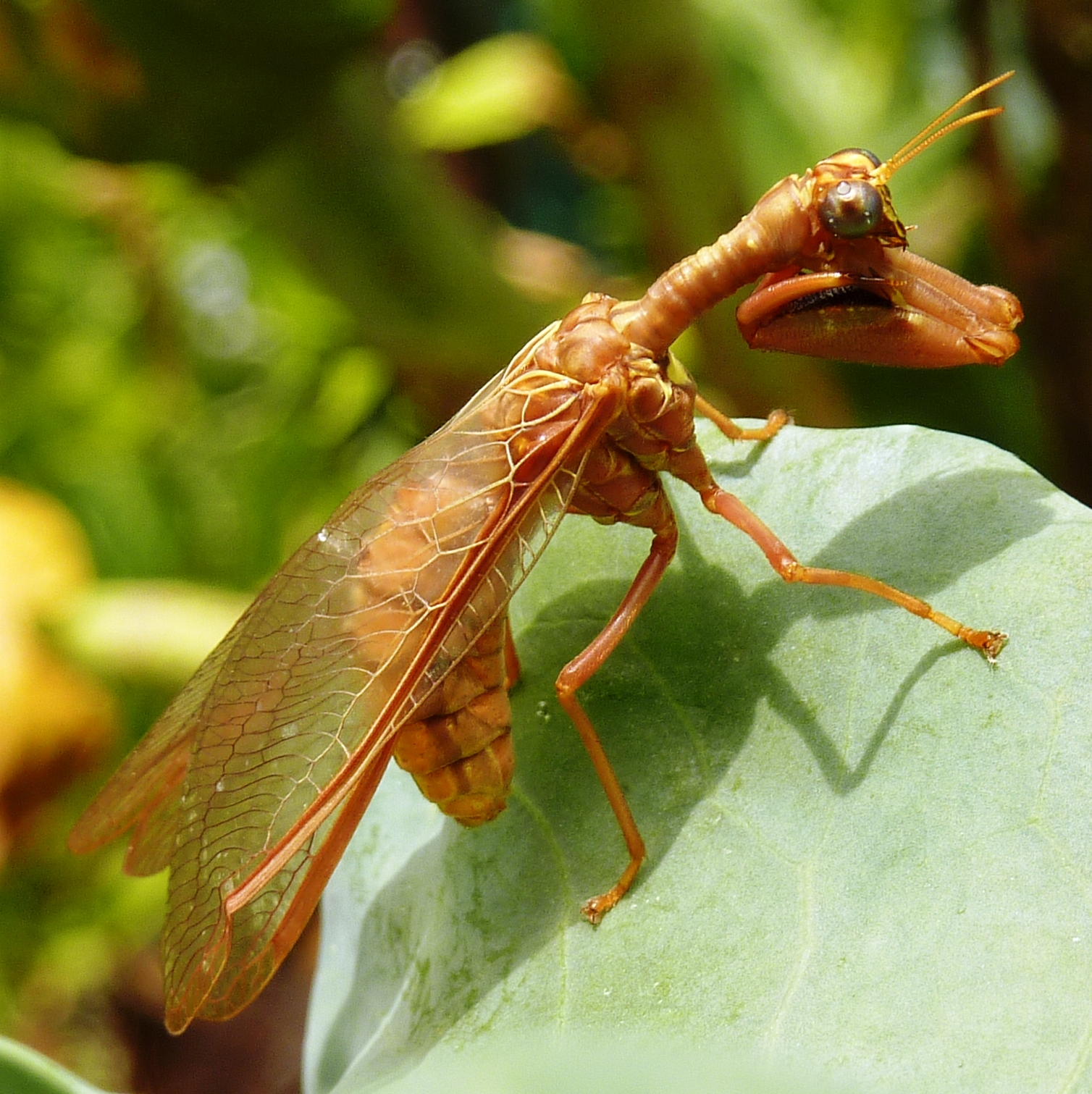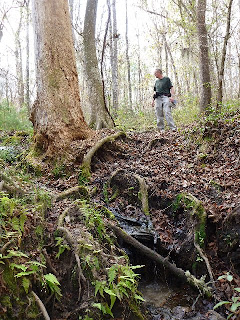Bruce and I visited the western side of Sanchez Prairie
last Saturday, riding bikes from the trailhead to the north side of the
prairie, and hiking from there counterclockwise around the prairie’s edge and through
its adjacent uplands and ravines to Moose’s Echo. The weather was clear, cool,
and dry – perfect! Altogether, we biked and hiked 8.3 miles. I had already been
over most of what we covered Saturday, but without my GPS unit, so I took that with
us. The trails, roads, and sinkholes we encountered will be added to the map of
the park’s trails that I have been constructing for the last several years. That
map is almost complete and is far more detailed than the park’s own published maps.
I intend to publish it here when it’s completed.
There are four ravines on the prairie’s western side, and
all are vegetated with mature mixed forested hammock consisting of spruce pine,
loblolly pine, live oak, swamp chestnut oak, Shumard oak, Florida maple, pignut
hickory, sweetgum, laurel oak, sugarberry, Southern magnolia, red mulberry,
persimmon, and others. Ravine bottoms contain all those species but are
dominated by swamp tupelo, sweetbay, and red maple. This photo shows a typical
scene within the ravines:
Here’s one of the forest’s Florida maples (Acer floridanum) with character:
The four ravines are so karstic that they only
occasionally, and only for short distances, exhibit signs of water flow. Their
surface waters sink directly into the ground and thus into the limestone containing
the Floridan Aquifer. Their headwaters terminate at semi-permanent seeps. Rain percolates
through sandy Holocene surface sediments, down to the top of the impermeable
Hawthorne formation (a sandy, fossiliferous, phosphatic clay), and flows
laterally to the edges of ravines to emerge as nonartesian seeps. These little springs
show us where the contact is between the two geological formations. More
importantly, the seeps create excellent habitat for primitive plants like
ferns, mosses, and liverworts:
Creeping Maiden Fern (Thelypteris
reptans):
Florida Tree Fern (Ctenitis
sloanei):
More creeping maiden fern (photo by Bruce J. Morgan):
These beautiful ferneries, however, are also prime
wallowing habitat for feral hogs. The nearly-permanent presence of seepage
waters running over sandy clay evidently makes a good foundation for a feral
hog wallow, like this one:
Feral hogs at San Felasco also make wallow-like
depressions in clay banks that are moist but not wet. Are these mineral licks
rather than wallows? Here’s one:
We spotted an unbaited feral hog trap in the uplands near
the prairie:
The entrance of Moose’s Echo Cave has changed since I saw
it last year. A columnar slug of the Hawthorne formation sediments measuring
about three feet in diameter by about six feet long was last year poised to
slide down toward the cave’s entrance. It looked so unstable that I dared not enter
the cave lest I cause the slug to collapse and cork me in. On the present trip,
I noticed that the slug had indeed slid downward several feet, not to occlude
the cave entrance but to land immediately beside and east of the cave entrance.
A new cave vent opened up between the clayey cliff wall and the slug directly
above the main entrance. It was too small for human entry. The cave’s main entrance
and the new vent both exhaled cool airstreams. The cave’s entrance is still as
unstable as it was a year ago, and again this year I dared not enter it. This
is a shot of me standing on that slug, looking into the new opening and balancing
on tiptoes in to keep from stepping on ferns (photo by Bruce J. Morgan):
We saw at least one sounder of hogs. We saw them twice
within fairly close proximity, both times within the prairie, so I believe they
are likely to be two sightings of the same sounder. (A sounder of swine is
composed of a dominant female and her young of potentially several generations;
mature boars live alone and separate from sounders except when servicing
females). Last winter I saw probably this same sounder passing by me while I
was hiding in a blind, and I counted 20+ individuals in the group. On another
occasion when I encountered them on a hike, I attempted to scare them away by
making threatening gestures and noises. Most of the piggies squealed in freight
and ran away, but the alpha female stood her ground about 50 feet from me, and doubtless
would have slashed my calves with her tusks if I had pressed the issue. Properly
chastised, I backed away from the confrontation.
Sanchez Prairie is a long way from any of the park’s
trailheads, which is why I use a bike to get there. I consider it one of north
Florida’s most ecologically-endowed poljes (large, wide, flat-bottomed,
multiple sinkhole). Its forests are mature and extremely biodiverse, it has numerous
kinds of plant communities, perched sinkhole pond habitats, and dry sinks, it
drains into a karst swallet, supports hundreds of wood ducks during winter, is
habitat for turkey, river otter and at least one nine-foot long alligator, has
multiple ravines and streams draining into it, and I have never seen other
people in there:
I wish we would eliminate its feral hogs.























